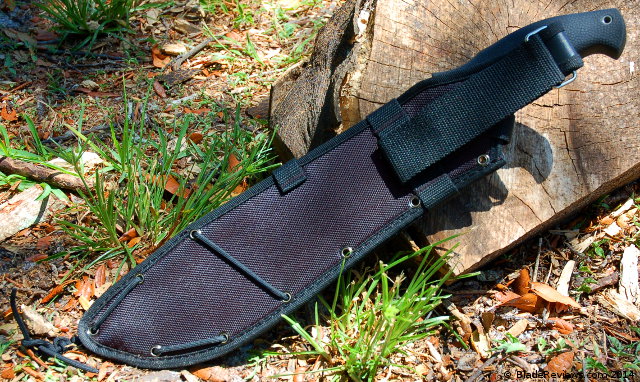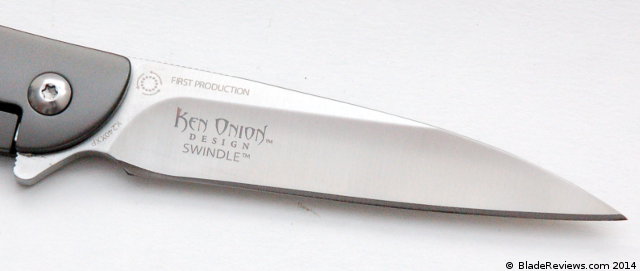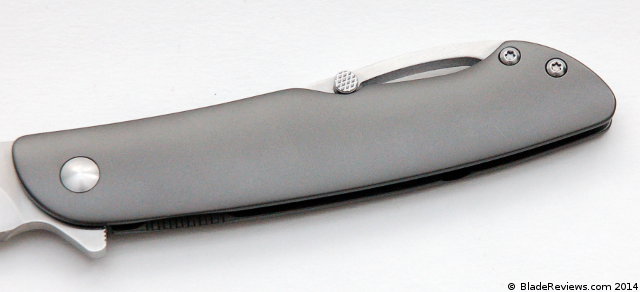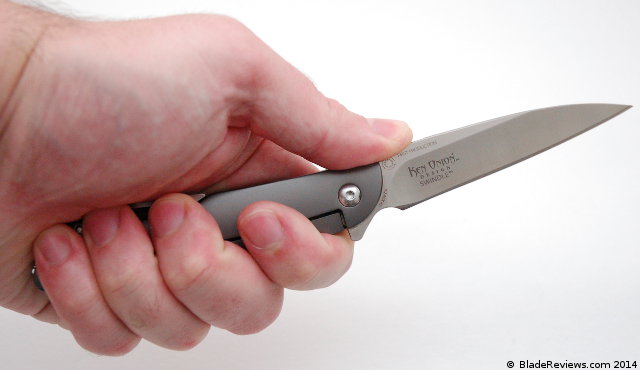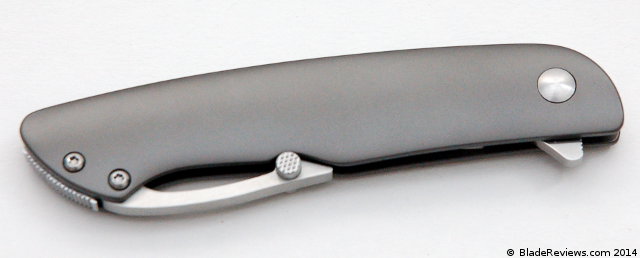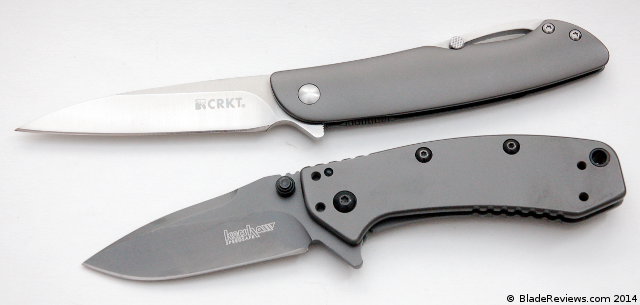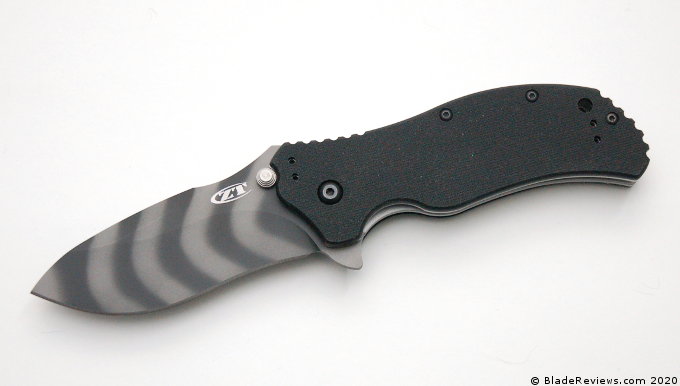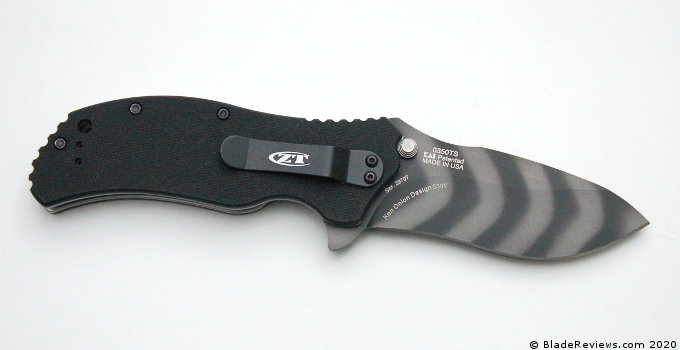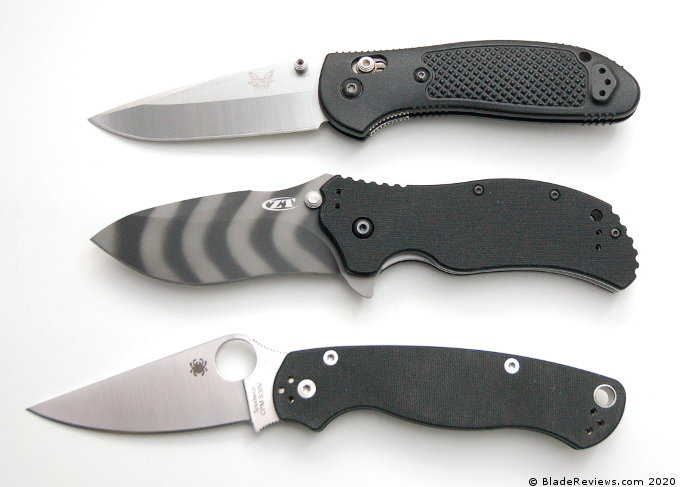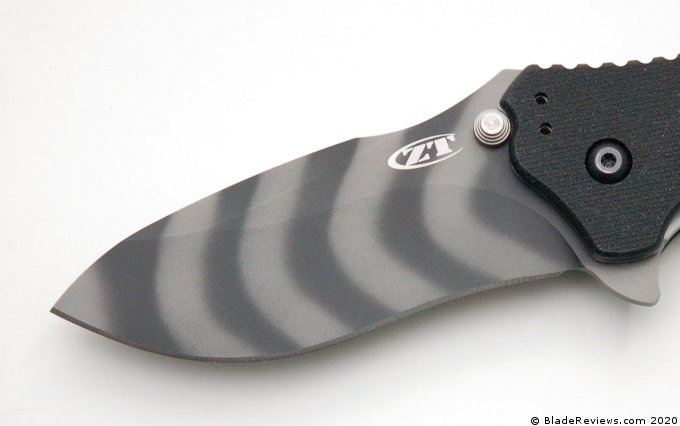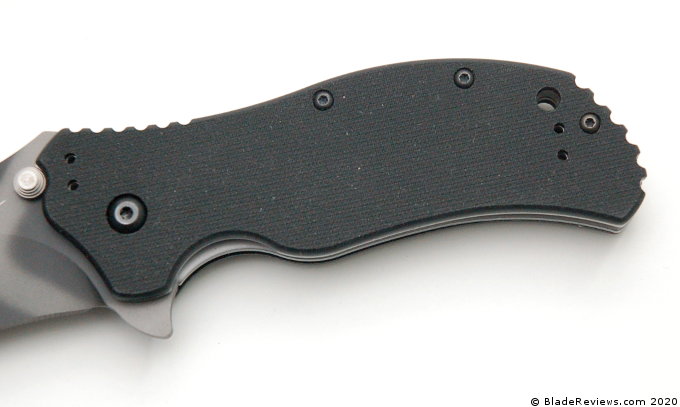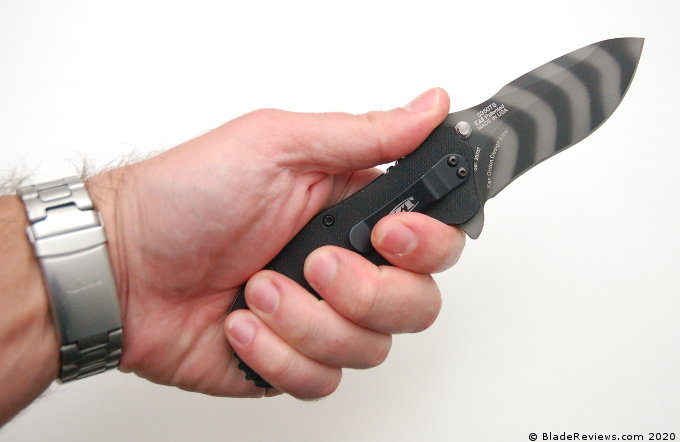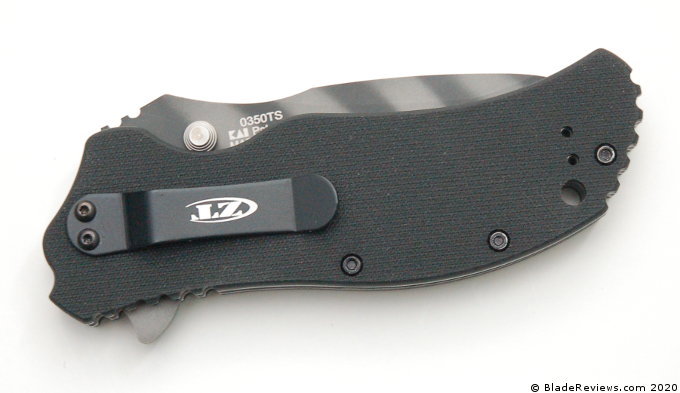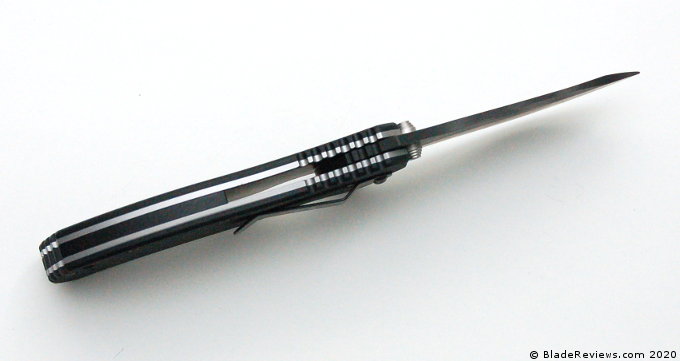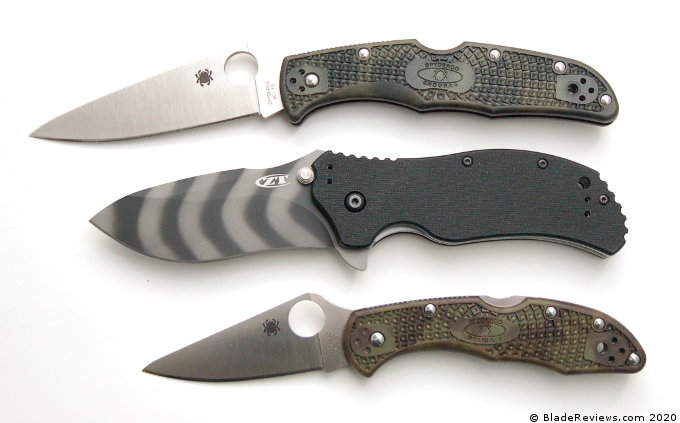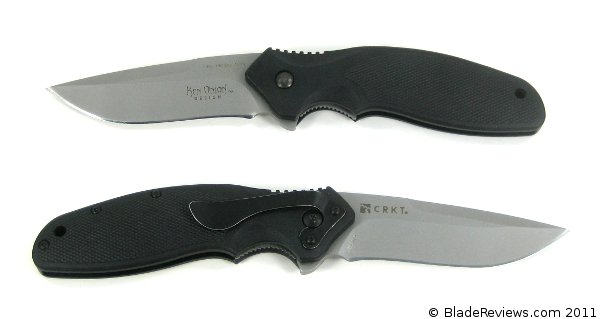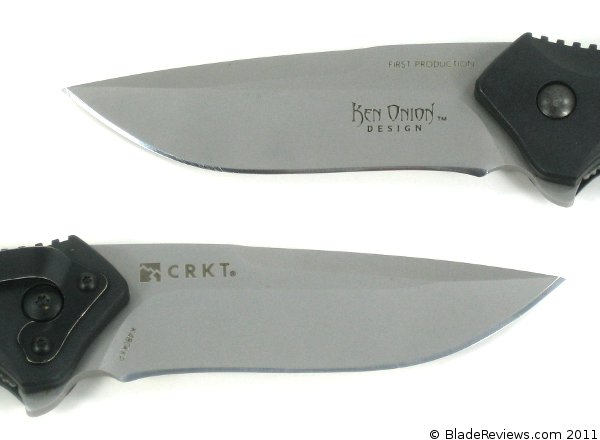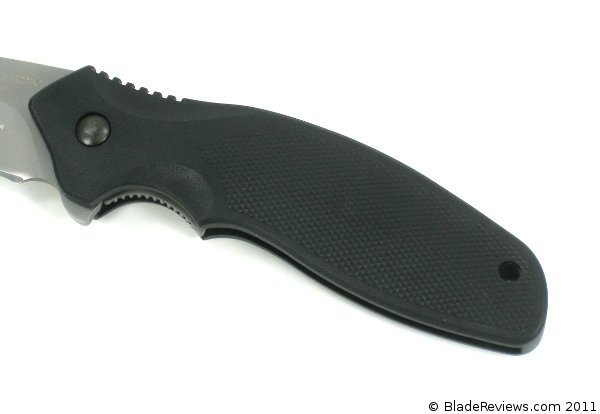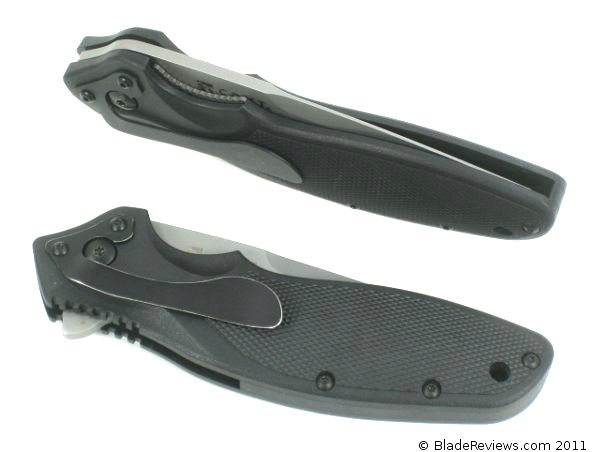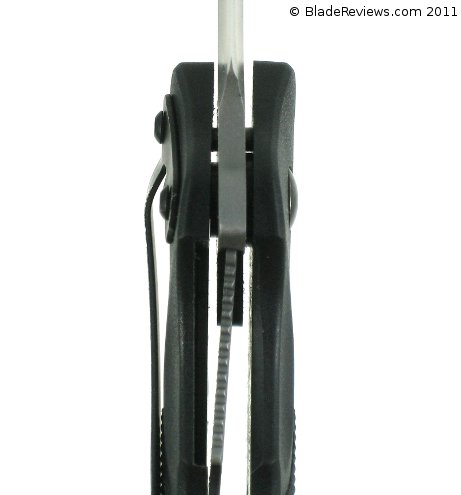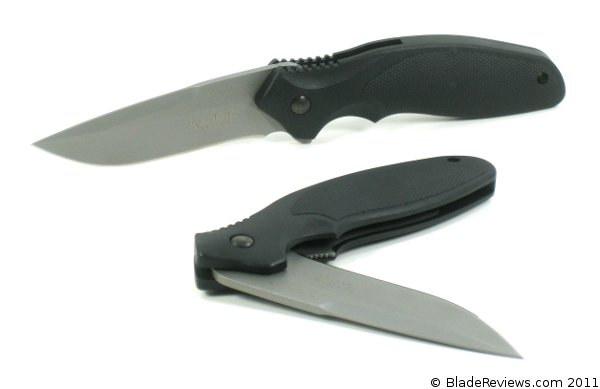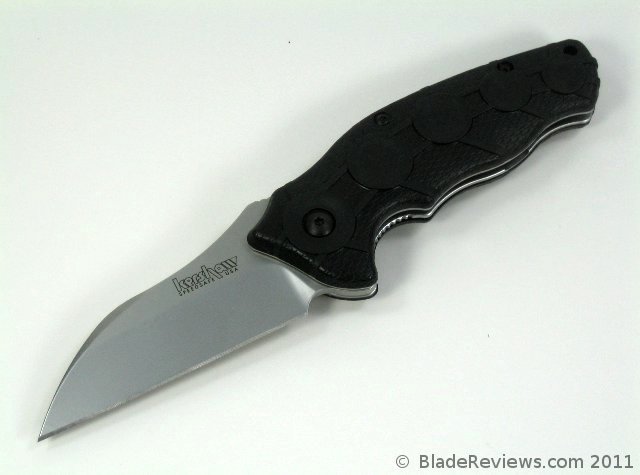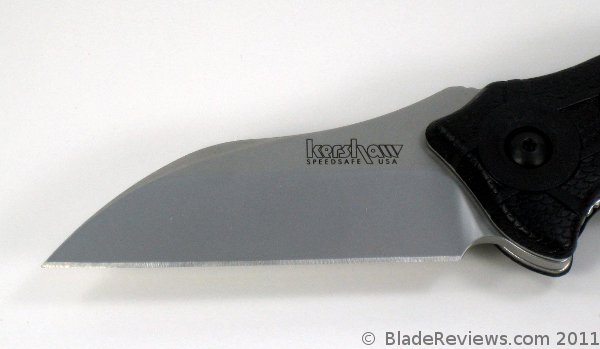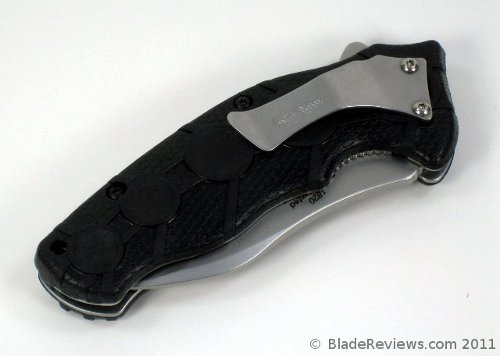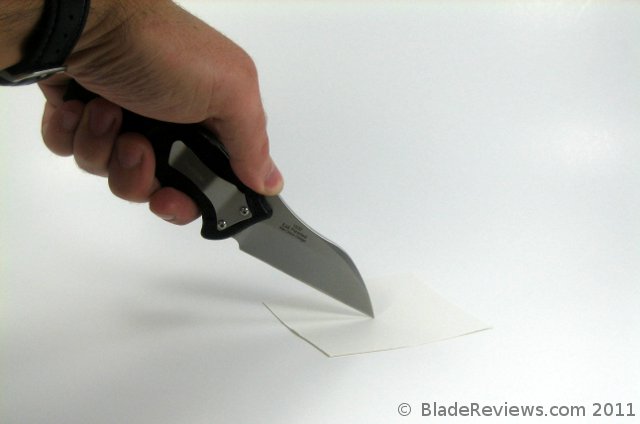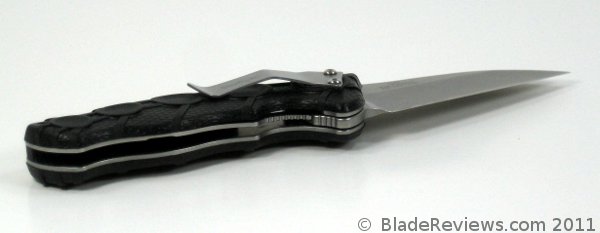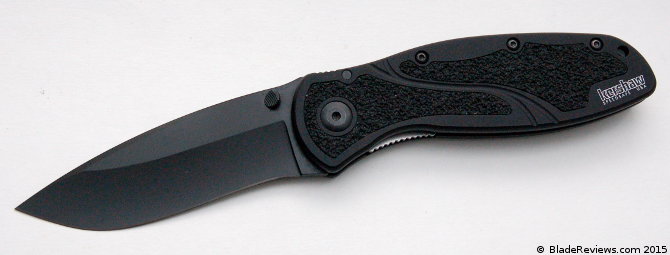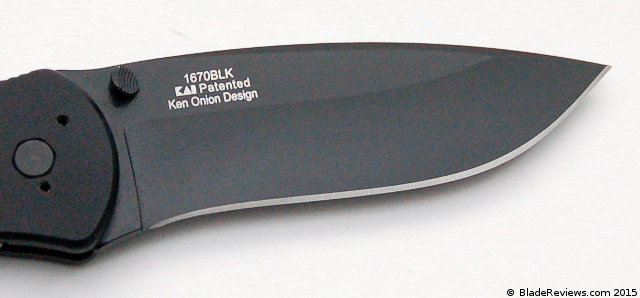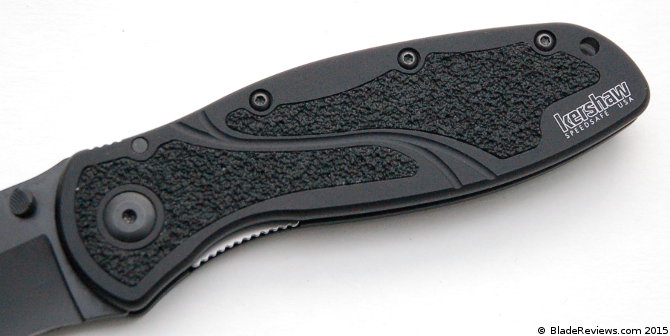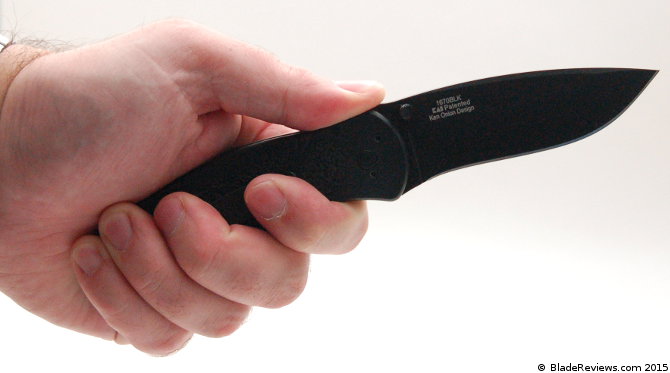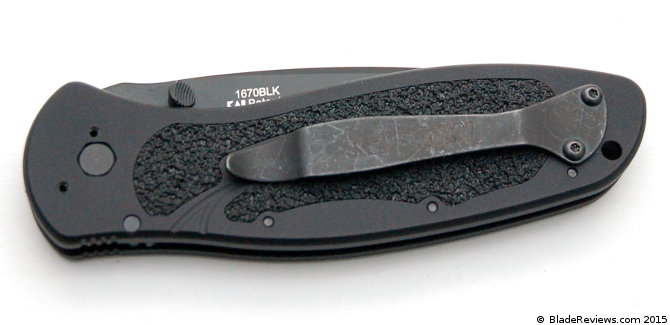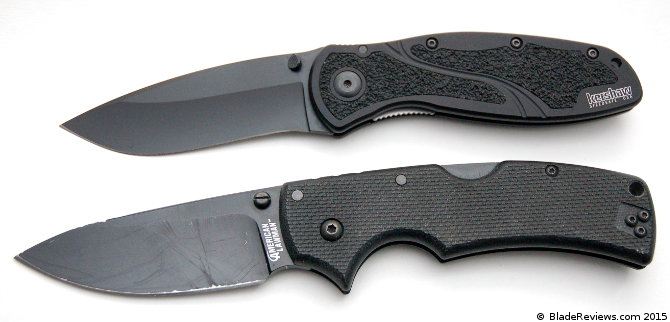Last Updated: September 7, 2019
Through his many collaborations with production knife companies Ken Onion has become one of the most recognized names in the cutlery industry. The Kershaw catalog is still chock full of Ken Onion classics like the Blur and Leek, Zero Tolerance landed him as their first big collaborator with the 0300 and 0350, and he has more recently released a number of excellent designs through CRKT, including the recently reviewed and highly acclaimed Swindle. I’ve waxed poetic about the man’s designs for the better part of a dozen knife reviews.
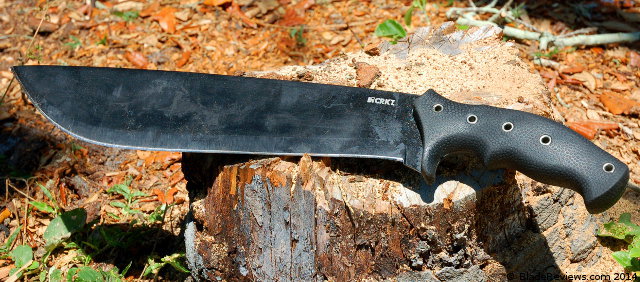
Buy the CRKT Chanceinhell at BladeHQ
That said, this review is still a first, as it is my first review of a KO fixed blade. Ken has released several fixed blade designs over the years, including a couple interesting lines of kitchen knives, but he is mostly known for his folders. To my knowledge the CRKT Chanceinhell is his first production design machete, and the Chanceinhell is an interesting piece. The deep swooping blade and aggressive handle shape is a pretty serious departure from your typical machete design, yet it still pays homage to the classic machete. Will the Chanceinhell represent another step forward for the Kenster, or has he overreached with this bold take on a classic outdoor tool? I’ll to get to the bottom of it with this review.
General Dimensions and Blade Details
The Chance in Hell has an overall length of 17.88″, has a 12″ blade, and weighs 1 pound 4 ounces. This knife is similar in length to my ESEE Junglas, but isn’t a great comparison because the Junglas is made from much thicker stock and is way heavier. The Chanceinhell is slimmer and lighter in comparison, and is more of a true machete than the Junglas.
Blade thickness on the Chanceinhell is 2.5mm, and the Chanceinhell is a lot lighter than my Ontario Machete. Granted my Ontario is a 16″ blade and this is a 12″, but the knife definitely feels light and nimble in hand. For those seeking out a larger machete the Halfachance, with its 14″ blade and interesting Parang blade shape, may be a better option.
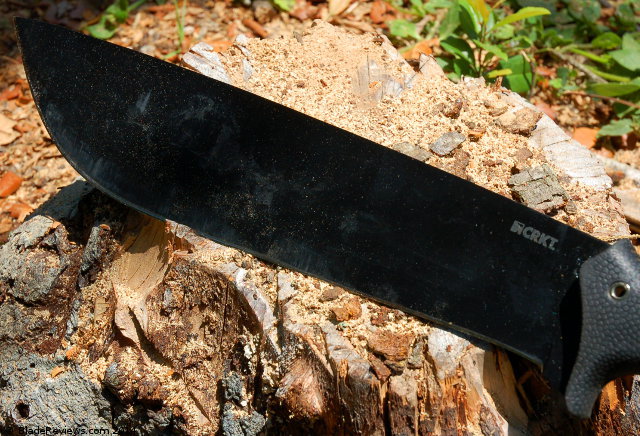
The Chanceinhell features a bold drop point blade shape. While it loosely follows the classic latin machete pattern common on more traditional machetes you definitely get a lot of Ken’s design influence showing through with the deep belly and curving blade. The first inch of blade actually forms the slightest recurve, but for all intents and purposes this knife does not have a recurve. Just like my Ontario Machete and a lot of other machetes, the chance in hell has a saber grind (low flat grind). The edge is v-ground although it blended into the saber grind and almost feels like a convex.
The steel on this knife is 65Mn carbon steel. This is a steel that I have previously had zero experience with. All I know is that it’s a carbon steel and will rust if you don’t take care of it, so I’ve been hosing mine down with WD-40 after every use. So far I have had zero issues with rust. Given the price point my guess is that it’s comparable to 1075 or 1085, but that is just pure conjecture.
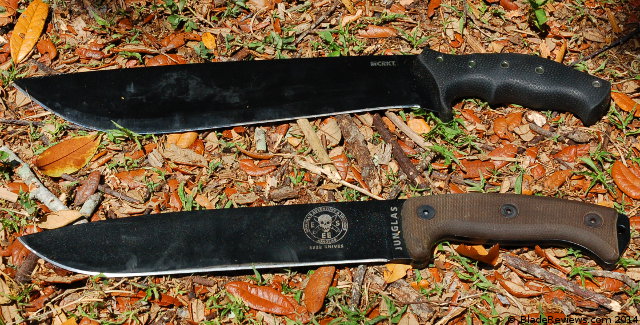
In practice this seems like a hearty steel and a good choice for a machete. I have beat on this knife pretty hard, trying to baton it through 6″ diameter pieces of oak (I was largely unsuccessful, but the machete held up well), lots of limbing, chopping up some fairly stout branches, and plenty of brush clearing and more typical machete tasks. It has held up well, with no chipping, bending, or cracking.
The big belly of the blade actually gives the knife a nice forward heft and generous sweet spot. The black blade coating does not have much texture to it and the blade stock is relatively thin so the knife bit deeply into the various woods I cut with it. Speaking of the coating, the blade comes powdercoated and this coating as actually held up really well. I haven’t been able to wear it off, and like I said I’ve been working with this knife pretty seriously so I figured if it was going to start to come off, it would have by now. All in all I am pleased with the performance of this machete.
Handle and Ergonomics
The Chanceinhell’s handle is made of injection molded thermoplastic rubber (TPR). The rubber handle fully engulfs the tang (my understanding is that the tang pretty much runs the length of the handle) and is held in place with a series of tubular pins. This isn’t immediately apparent from the pictures, but this handle is over an inch thick. So far I can’t complain. I’ve used the knife on a dozen or so occasions and have yet to see any splitting or cracking. Granted I live in Florida so we don’t get much fluctuation in temperature down here but this handle has held up well.
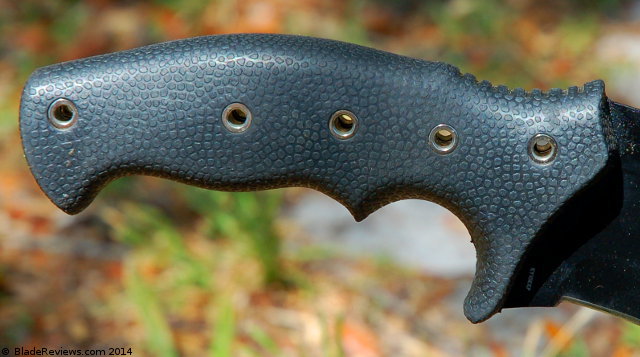
The handle shape is probably the most characteristically Ken Onion aspect of this design, and features plenty of his swooping curving lines. Another interesting ergonomic aspect is the negative angle (pistol grip) to the handle. It all looks great on paper but a huge question for me was whether this thing would actually work in my hand. I’m not going to lie, it took only 10 chops with the Chanceinhell before a fairly substantial blister opened up on my palm below my pinky. That did not bode well for this machete, but I have to say that I haven’t had a blister or hot spot from this knife since.
I don’t mind the negative angle either, as it tends to accentuate the forward heavy chopping nature of the knife. This handle design works well for me, and I’m saying this after dozens of sessions with the knife. I am not sure if I would say it is “better” than a more classic simple handle shape; it’s just different and I am sure it will work everyone’s hand slightly differently.
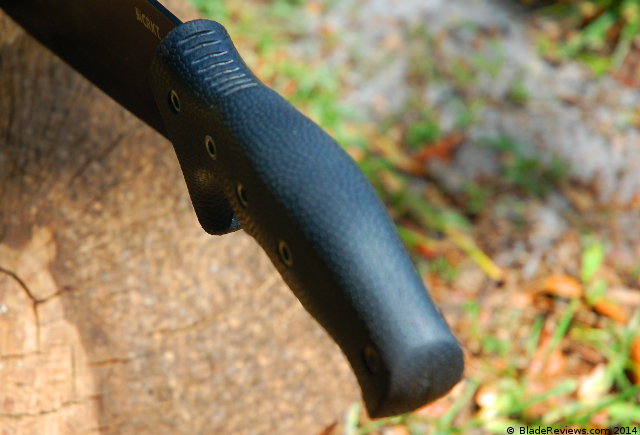
I will say that I think the TPR is a great handle choice from an ergonomic perspective. This is like the orthopedic shoe equivalent of knife handle material. It will absorb some of the vibration from the blade, and the light faux pigskin texture holds the hand in place, even when you are tired and sweaty. I like that aspect of the handle a lot, and it has held up well. No cracking, splitting, etc.
Sheath
The Chanceinhell comes with a nylon sheath. It’s pretty basic, with a large belt loop that can be strapped down or used as a dangler. The belt loop is held together with velcro, and I like how you can use the belt loop without having to take your belt off. The edges have been stitched and riveted together, and the blade is held in place with three snaps.
These snaps do an OK job retaining the blade. If you play around with it, you can pull the knife out without releasing any of the straps, so this is not something I would recommend carrying upside down or jumping out of an airplane with.
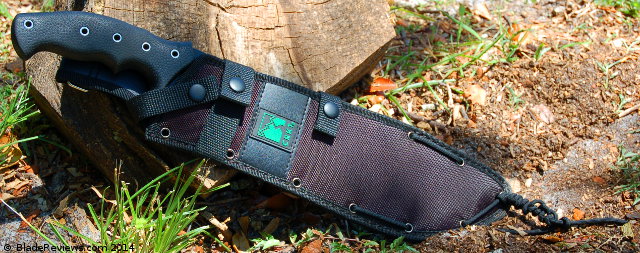
It’s a far cry from the molded kydex sheath of my Junglas, but then again the price of this knife is a far cry from my Junglas, so it’s pretty much on par with any other Machete/sheath combo you will find at the $40 price point. It’s lightweight and basic, but gets the job done. You can’t expect to be blown away by the sheath at this price point, and in that respect the sheath met my expectations.
CRKT Chanceinhell Review – Final Thoughts
the Chanceinhell is an interesting take on the machete. Ken has less room to move when it comes to reinventing a classic tool like the machete, but I think he did a good job in distinguishing this from the pack, while still leaving you with a functional and robust design. This has been married to materials that are price appropriate and well executed, leaving you with a functional and affordable package.
I was most pleased by the way this machete cut. I have been wielding my Junglas around for quite some time now, and although I love the weight to that knife, the thick grind and chunky powdercoat means that it is not the leanest chopper. The Chanceinhell actually cuts better than my Junglas, but has still held up well under my use. The sheath, like on many inexpensive machetes, is merely adequate. I think the knife itself is significantly better than the sheath.
I take pride in actually testing everything that I review, and I spent a few months with this machete prior to putting pen to paper. It’s a stout tool and I have come to respect it, but I am hesitant to give it a blanket recommendation because I am not sure whether the handle design will work for everyone.
If the idea of a Ken Onion designed machete intrigues you, try it out and see what you think. I have enjoyed mine and will continue to reach for it when I need a lightweight machete for camping or yard work.
- Enhanced Protection: Black coating improves corrosion resistance
- Exceptional Grip: Football textured handle for grip
- Built Tough: Reinforced nylon sheath provides carry options
- Designed by Ken Onion in Kaneohe, Hawaii
- Limited Lifetime Warranty covers any defects in materials or workmanship, see company site for details
I recommend buying the Chanceinhell at BladeHQ or Amazon. Thanks for reading.
